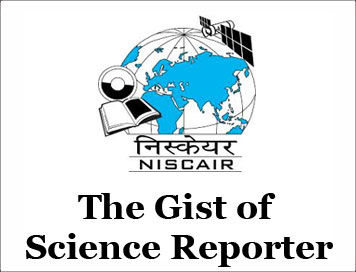(HOT) UPSC Current Affairs 2025 PDF
NEW! The Gist (NOV-2025) | E-BOOKS
(GIST OF SCIENCE REPORTER) INDIA’S FIRST GENE-EDITED SHEEP
(GIST OF SCIENCE REPORTER) INDIA’S FIRST GENE-EDITED SHEEP
(JULY-2025)
INDIA’S FIRST GENE-EDITED SHEEP
Context:
A team of researchers from the Sher-e-Kashmir University of Agricultural Sciences (SKUAST) in Srinagar has produced India’s first gene-edited sheep.
Research and Development
-
Lead Institution and Researcher: The research was conducted by a team at SKUAST-Kashmir, led by Prof. Riaz Ahmad Shah, Dean of the Faculty of Veterinary Sciences.
-
Funding: The project was sponsored by the Indian Council of Agricultural Research (ICAR).
-
Technology Used: The gene editing was performed using CRISPR-Cas9 technology, which adheres to international biosafety protocols. CRISPR won the 2020 Nobel Prize in Chemistry.
-
Targeted Gene: The gene-edited lamb was modified for the ‘myostatin’ gene, which is a regulator of muscle growth.
-
Result: By disrupting this gene, the muscle mass in the animal is enhanced by nearly 30 per cent. This specific trait of increased muscle mass is naturally absent in Indian sheep breeds but is known in select European breeds like the Texel.
-
The primary immediate benefit is the ability to produce sheep with nearly 30% more muscle weight, leading to heavier animals. This could lead to increased productivity for farmers.
Gene Editing
-
Gene editing, also known as genome editing, involves technologies that allow scientists to precisely change an organism’s DNA.
-
These technologies enable the addition, removal, or alteration of genetic material at specific locations within the genome.
-
The primary goal of genome engineering is to alter an organism’s genetic code to prevent detrimental health effects that can arise from changes in nucleotide arrangement.
-
Gene editing can occur at the DNA, RNA, or epigenetic level.
Applications of Gene Editing
-
Medicine: Gene editing offers transformative potential in healthcare, aiming to prevent, study, and treat diseases.
-
Drug Discovery: It accelerates the process of identifying and validating drug targets, enabling scientists to screen a large number of targets and understand genes involved in disease progression or drug sensitivity. CRISPR-Cas9, for example, is being used in cancer immunotherapy trials.
-
Therapeutics: Gene editing is “tailor-made” for treating genetic diseases by correcting errors or typos in the genetic code that lead to loss of protein function. This includes inherited disorders and those driven by mutational load, like cancer.
-
Diagnostics: Due to its targeted nature, CRISPR serves as a powerful diagnostic tool for detecting infectious and non-infectious diseases.
-
Agriculture: Gene editing can yield beneficial results for the food supply by addressing issues in food safety and availability.
-
Livestock Improvement: Scientists are using genome- engineered cattle and salmon to foster disease resistance, increase sustainability, and improve their nutritional and therapeutic value.
-
Crop Enhancement: Genome editing principles, particularly CRISPR, are being applied to crops like wheat, rice, and coffee to address issues such as food intolerance and spoilage. For instance, CRISPR-Cas9 is used to improve the immunogenicity of wheat, which is a main cause of celiac disease.
- Biofuels and Environment: Gene editing is helping scientists protect the environment by aiding biofuel research. Specific genetic manipulation of microbes using CRISPR is being used to improve their tolerance to biofuels, which is a limiting factor in economically friendly fuel production.
CLICK HERE TO DOWNLOAD FULL PDF
CLICK HERE TO DOWNLOAD UPSC E-BOOKS
Study Material for UPSC General Studies Pre Cum Mains
Get The Gist 1 Year Subscription Online
Click Here to Download More Free Sample Material
<<Go Back To Main Page
Courtesy: Science Reporter



